
RCC 2023: Heaven or Hell in the Anthropocene
Witness a once-in-a-lifetime experience; Heaven and Hell in the Anthropocene by Professor Bahia Shehab.
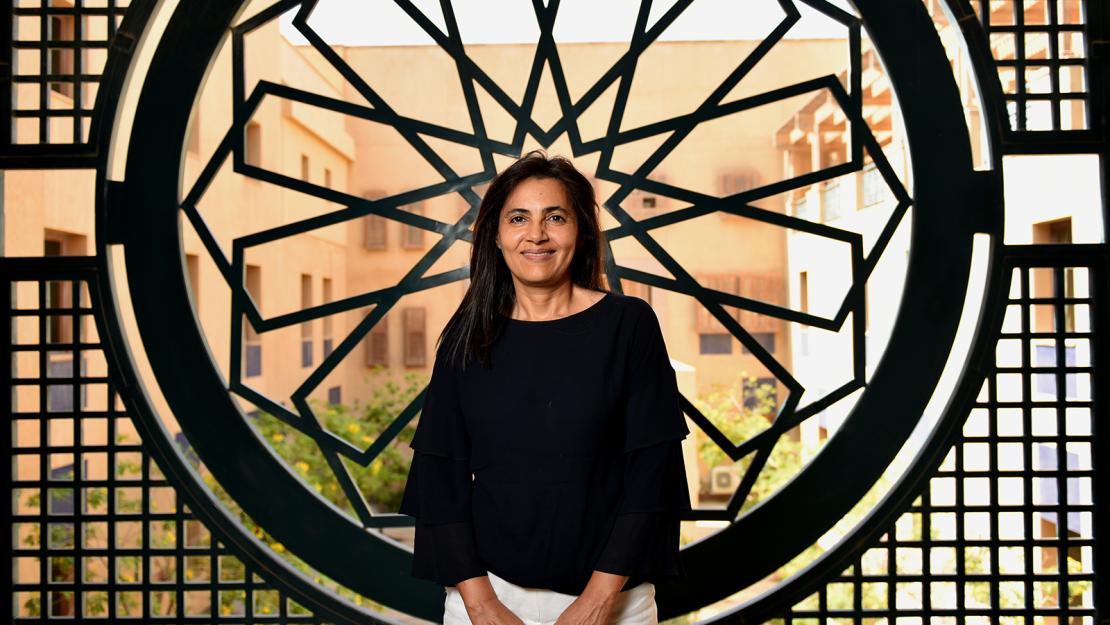
From agricultural investments to carbon taxing, fiscal adaptation measures may help counteract imminent setbacks.
When Abeer Elshennawy (MA ’92), professor in the Department of Economics, was a PhD candidate at the University of Minnesota, her adviser recommended she concentrate on the environment — unusual advice for someone studying applied economics in 1992.
“At that time, environmental studies in Egypt was considered a luxury,” Elshennawy said.
Thirty years later, her adviser’s recommendation seems wise — even obvious — as the effects of climate change take hold. Studying the environment is no longer a luxury; it’s a necessity.
An environmental economist, Elshennawy focuses her research on how developing countries can balance climate concerns against financial ones.
To read the full article, click here.

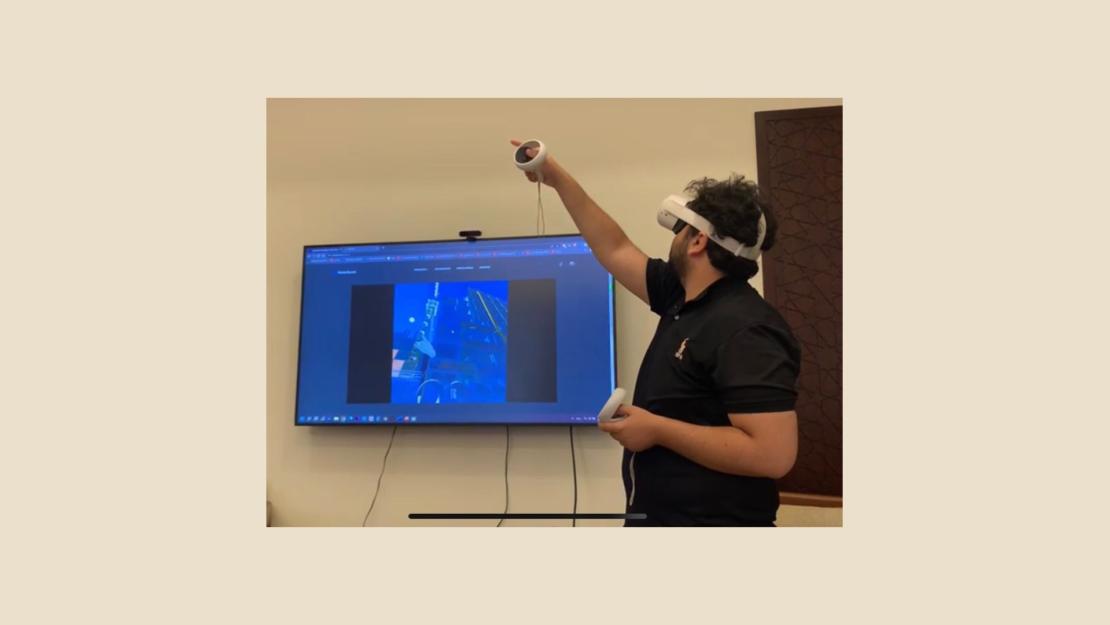
Faculty members and graduate students from AUC’s Department of Construction Engineering are using virtual reality (VR) to develop and deploy training models that will improve safety at construction sites. These training models allow students to navigate construction sites of bridges and high-rise buildings using VR headsets to visualize hazards, including falls, struck-by injuries, slips and general construction site safety.
“Recent studies show that around 60,000 fatalities occur annually worldwide due to construction accidents,” said Ossama Hosny, professor and graduate program director in the Department of Construction. “It is not just about time, cost and quality but also about safety in the workplace.”
Traditionally, students and construction workers learn about site safety through lectures and textbooks. The new VR models offer a hands-on, innovative way to encourage safe practices. “We have developed new VR-based safety training programs that address the potential hazards associated with some of the riskiest projects in the construction world,” said Ibrahim Abotaleb, assistant professor of construction engineering. “It has been found that lack of proper training is the main cause of on-site construction fatalities.”
Virtual Reality: A New Solution?
Construction VR training programs are becoming increasingly present in the industry worldwide, prompting new research on the effectiveness of VR training compared to traditional training.
Experimental testing of AUC’s models indicated that VR training significantly improved students’ understanding and visualization of safety procedures.
Research on the safety training models was presented in the Construction Research Congress by the American Society of Civil Engineers in Virginia, USA, and in the Canadian Society for Civil Engineering Conference in British Columbia, Canada. It was also published in the Journal of Computer Applications in Engineering Education.
“Based on the results of our studies, the models we developed performed better in terms of visualization, immersion, realism and ability to enhance the desired hazard identification and mitigation skills compared to traditional training programs,” Abotaleb stated. “The developed models are the first in the world to integrate adult learning theories abstracted from psychology into full training modules specialized in high-rise buildings and bridges.”
Student Engagement with Virtual Reality
Working on a full safety model for high-rise building construction as part of her thesis research, construction engineering graduate student Sahar Bader focused on the behavioral aspect of training. She incorporated learning theories to develop a sound methodology that includes motivation, reputation and problem-solving.
As part of his master’s thesis, Mohamed Sherif, a graduate student and research assistant, has combined VR and augmented reality to create an immersive safety training model for the construction of bridges and highways, a significant feat due to their importance in Egyptian national projects.
This is not the first time the construction engineering department has introduced VR in their teaching. During the COVID-19 lockdown, Abotaleb managed to provide his students with virtual field trips to construction sites from the safety of their own homes. Using VR, he captured construction sites with a 360-degree camera, recording surroundings, interviewing on-site workers and delivering lectures as if the students were there with him.
Hosny also has incorporated VR in one of his courses to allow students to better identify and mitigate risks associated with high-rise construction.

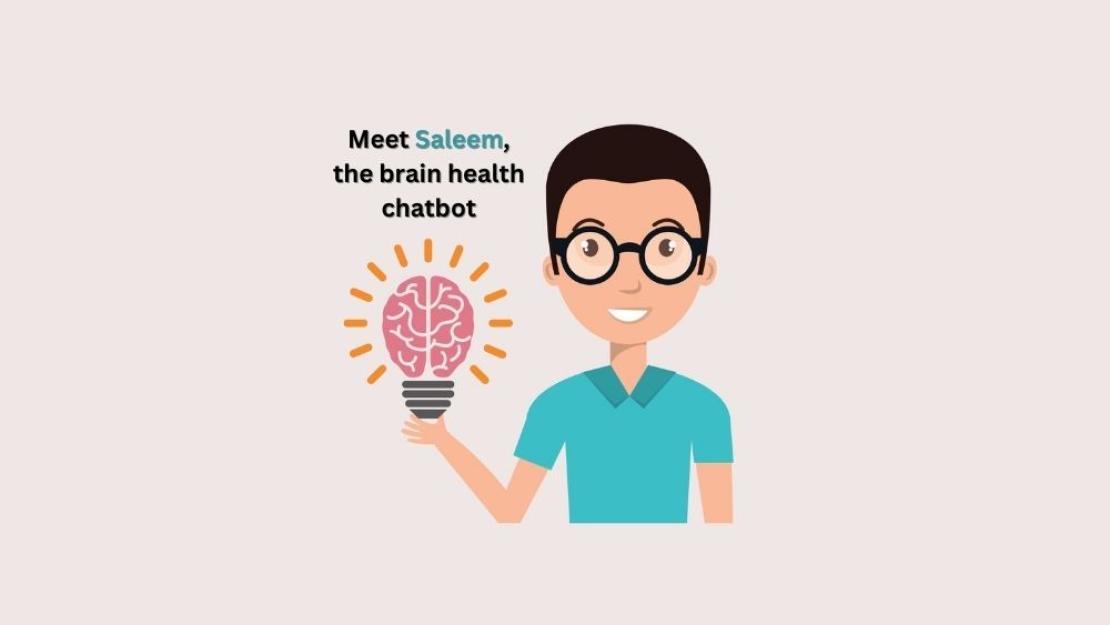
Meet Saleem, an automated chatbot that promotes brain health and mental well-being over Facebook Messenger. Developed by Asmaa Saeed, a public health master’s student in AUC’s Institute of Global Health and Human Ecology, the Arabic-speaking bot seeks to teach Arab individuals ways to improve their brain health in a conversational manner, such as giving advice on maintaining healthy eating habits or referring individuals to mental health websites and resources.
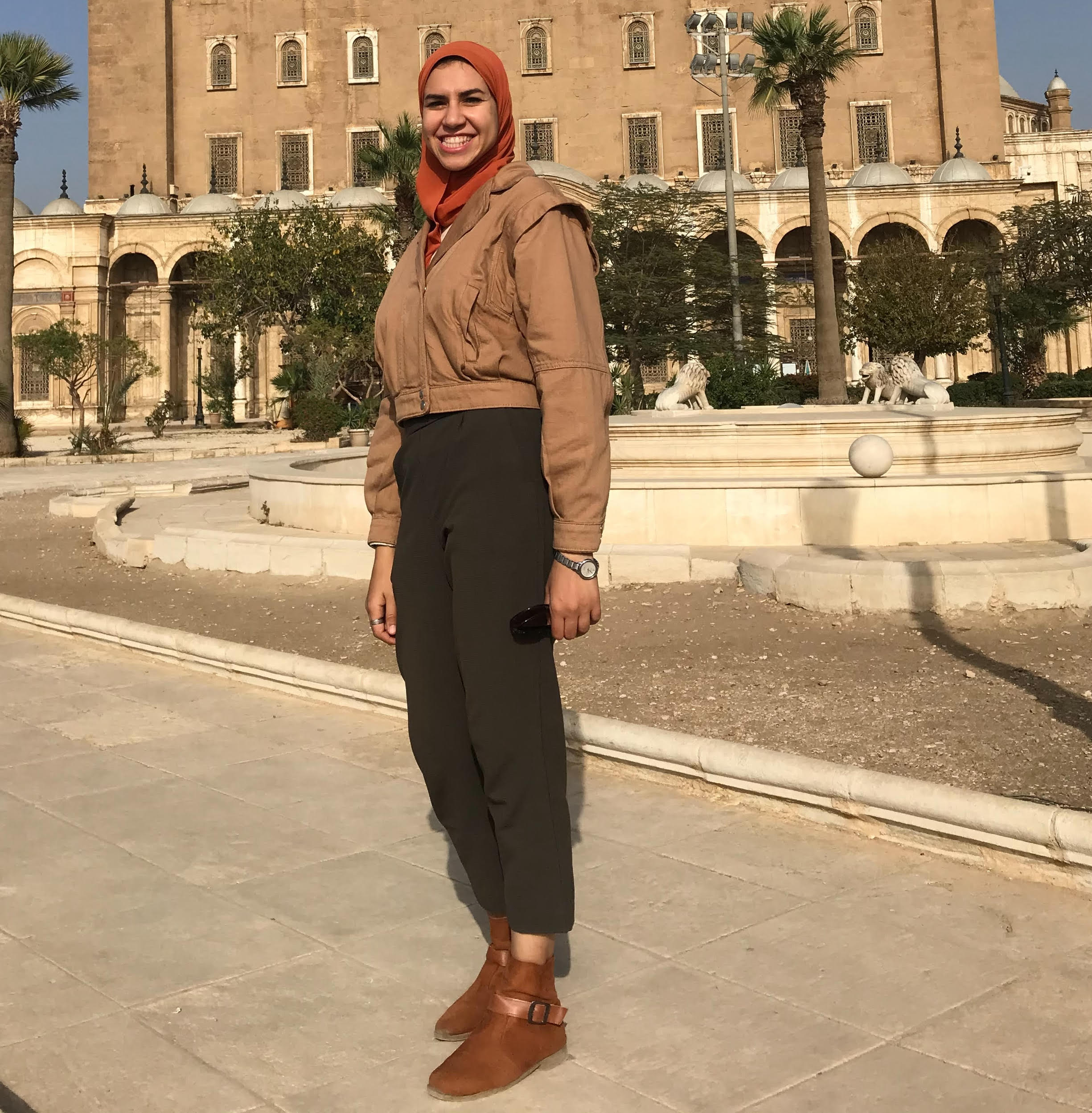
“The chatbot teaches individuals about various lifestyle factors associated with long-term brain health and mental function,” Saeed explains. “It gives the users tailored, personalized tips and recommendations for proactive steps and behaviors to support brain health.”
Saeed, who is also a research assistant at AUC, received an award from the International Brain Research Organization/Dana Brain Awareness fund for improving global engagement, outreach and brain awareness in an underrepresented region.
Saeed built Saleem because she is interested in the prevention of neurodegenerative diseases. “While science is doing its best to develop treatments that can prevent or delay these diseases, it’s not there yet,” she states. “Until it is, we need to adopt healthy lifestyles and behaviors that eliminate certain risk factors, such as hypertension, obesity, depression, physical inactivity and smoking.”
Saeed hopes that Saleem’s interactions with users will inform and influence them to make healthier choices. “The main challenge with this project is that there is limited awareness about brain health in this region and people here are not always willing to change their lifestyle,” she says.
To encourage better habits, Saeed made the chatbot as engaging as possible. “I named the chatbot Saleem, used human-like characteristics in the profile picture, developed empathic statements for the bot to use and enabled the program to utilize emojis, customized tips and referrals to helpful resources,” she says. “Developing Saleem was my favorite part of this project.”
Even Saleem’s name is an encouragement of brain health. “In Arabic, Saleem means healthy, and there is a famous Arabic wisdom that says, ‘The healthy brain resides in the healthy body,’” Saeed explains. “This perfectly matches with Saleem's goals literally and metaphorically.”
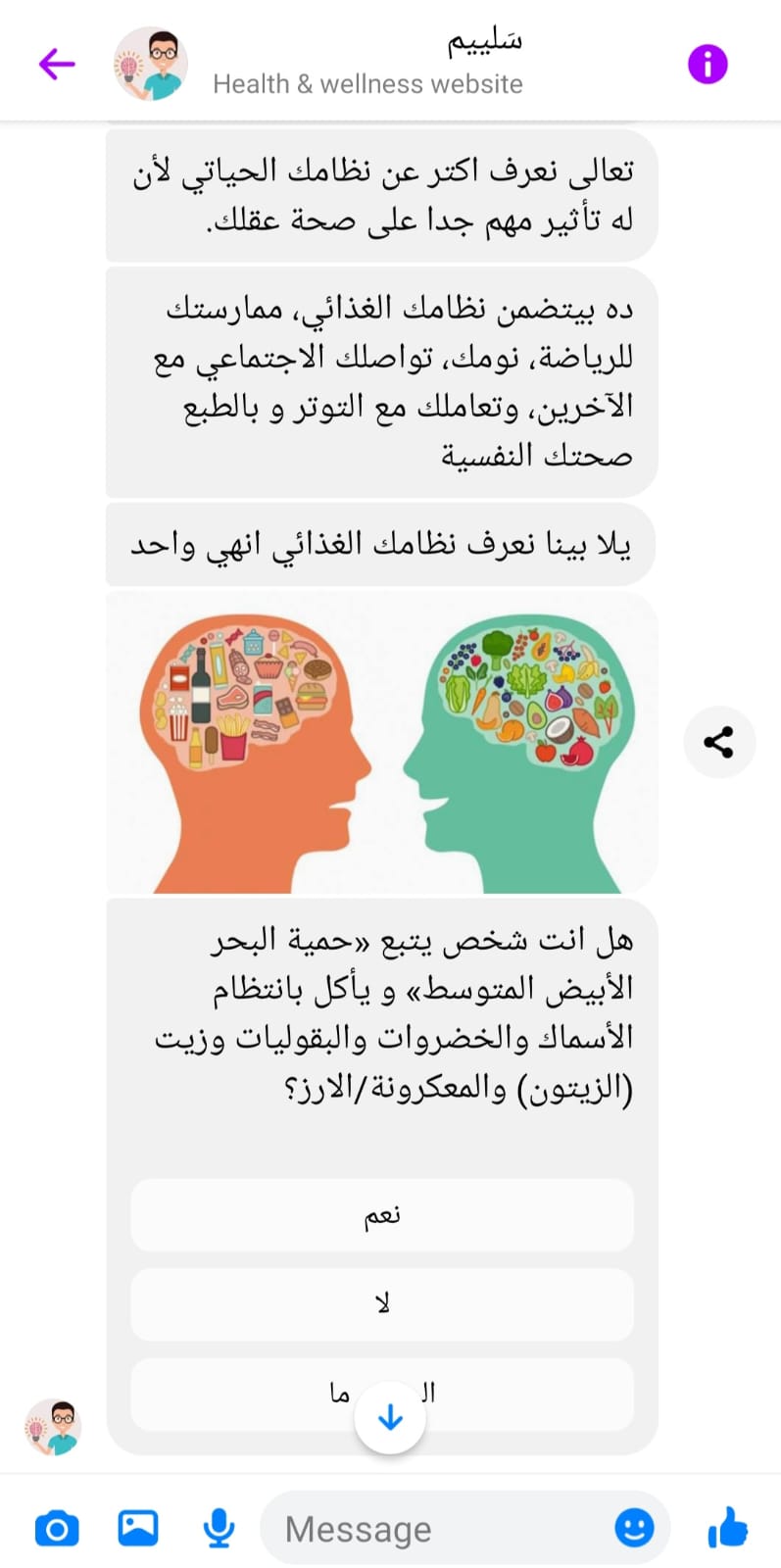 Saleem offers an array of solutions for its users. “For instance, we know that social connectedness impacts brain health,” Saeed states. “The chatbot gives users this advice: ‘Stay in touch! Rich social networks offer sources of support, ease stress, fight depression and stimulate the brain.’”
Saleem offers an array of solutions for its users. “For instance, we know that social connectedness impacts brain health,” Saeed states. “The chatbot gives users this advice: ‘Stay in touch! Rich social networks offer sources of support, ease stress, fight depression and stimulate the brain.’”
Saeed says her time at AUC was very important to the development of Saleem. “I created the idea of Saleem for my final project in my Global Health Communication Course. Professor Mohamed Salama helped me polish the idea and guided me throughout the steps of making the chatbot into its best version,” she recalls.
Saeed’s project was also a finalist in the Global Health Change Makers pitch competition, hosted by the American University of Beirut. The competition promotes projects that relate to global health and the UN Sustainable Development Goals. “Saleem contributes to the goal of maintaining healthy lives and promoting well-being as societies age,” she explains.
Saeed is optimistic about the future of her project and about public advocacy. “I believe that the impact of brain health advocacy and public awareness will one day improve health outcomes for both the individual and the community,” she concludes.
